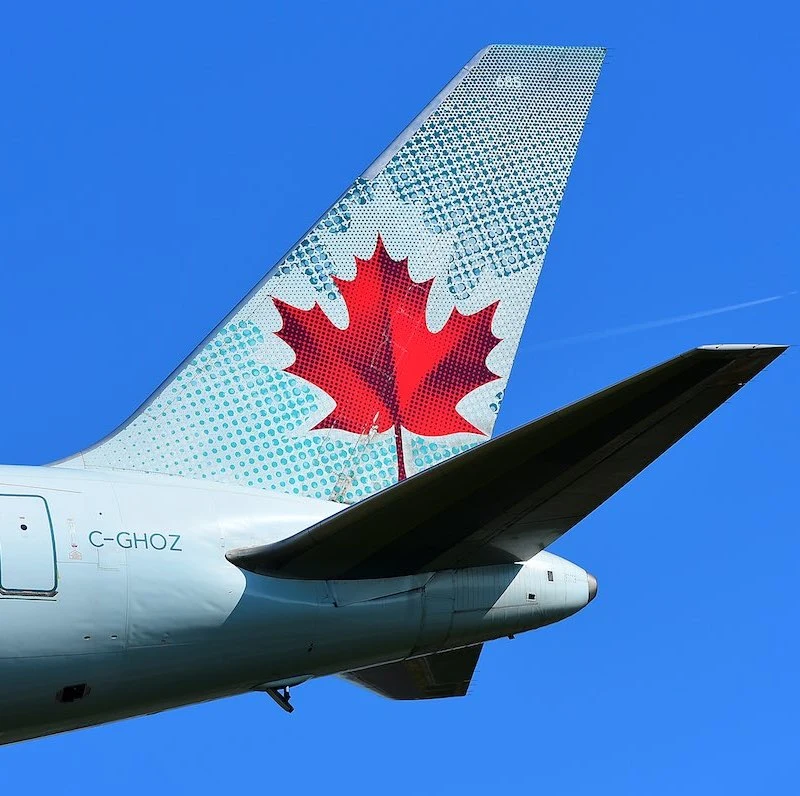The flag carrier Air Canada has been recently expanding. And not only with new routes or relaunching flights—like they recently did by reconnecting Toronto to the Mexican Caribbean destination Cozumel—, this time, the airline is investing in new modern electric planes.
Air Canada recently announced a purchase of 30 ES-30 electric-hybrid aircraft developed by the Swedish start-up Heart Aerospace. The innovative electric planes will start serving passengers in 2028 on regional routes. The carrier hasn’t specified which destinations they will serve with the new planes but shared valuable information about how the new aircraft works and its environmental benefits.
Michael Rousseau, President and Chief Executive Officer of Air Canada, said: “Air Canada has taken a leadership position in the industry to address climate change. The introduction into our fleet of the ES-30 electric regional aircraft from Heart Aerospace will be a step forward to our goal of net zero emissions by 2050.”
Rousseau also highlighted the company’s support for new technologies addressing climate change—and mentioned sustainable aviation fuels and carbon capture— and added: “We are now reinforcing our commitment by investing in revolutionary electric aircraft technology, both as a customer for the ES-30 and as an equity partner in Heart Aerospace.”
Air Canada has shared great insight on how the future short-haul experience will be for travelers and the company’s projection. They also invested a US$5 million equity stake in Heart Aerospace, demonstrating their trust in the Swedish company.
Heart Arospace’s Electric Planes
The Heart Aerospace’s model bought by Air Canada, the ES-30, will have the capacity for up to 30 passengers and will serve short routes. The aircraft will yield operational savings for the company as well as other benefits.
Anders Forslund, founder and CEO of Heart Aerospace, explained more about the alliance: “Air Canada is a strategically important partner for Heart Aerospace. The company has one of the world’s largest networks operated by regional turboprops, and it is also a progressive, future-leaning company, especially in the green transmission.”
Forslund also shared a few words about their expectations in the near future: “With the ES-30 we can start cutting emissions from air travel well before the end of this decade.”
These are the main characteristics of the ES-30 electric planes according to the information shared by Air Canada and Heart Aerospace’s website:
- It can carry 30 passengers in a 2×1 configuration.
- Features a gallery and a lavatory.
- Includes cabin stowage, overhead bins, and an external baggage and cargo compartment.
- Powered by lithium-ion batteries (main energy source).
- Charging time is expected to be from 30 to 50 minutes.
- Equipped with reserve-hybrid generators that can use sustainable aviation fuel.
- Will generate zero emissions flying on battery power.
- Can travel all-electric up to 124 miles (200 kilometers) and 248 miles (400 kilometers) in hybrid mode.
- Each airplane has 4 electric motors.
- Its maximum altitude is 20,000 ft.
- These models are quieter than traditional planes during takeoff and landing.
- Offer better operational parameters.
The ES-30 is Heart Aerospace’s newest airplane designed and replaces the previous model, the ES-19. This new cost-efficient model is ideal for short routes.
With the purchase of the 30 hybrid-electric planes, Air Canada became the first commercial airline in Canada to consider this transportation. In the United States, United Airlines and Mesa Air Group already ordered over 100 smaller electric-powered planes each, in 2021, the ES-19—with capacity for 19 seats—, also to Hear Aerospace. Both companies expect to start serving regional routes with the new electric aircraft by 2026.
United Airlines also recently invested in electric flying taxis with Brazilian aircraft company Eve Air Mobility and made a conditional purchase of 200 four-seat electric aircraft. The future of air travel is electric and the commitment to zero carbon emissions by 2050 looks possible with airlines and startups working together to develop new technologies and innovative aircraft.
Credit: Source link

